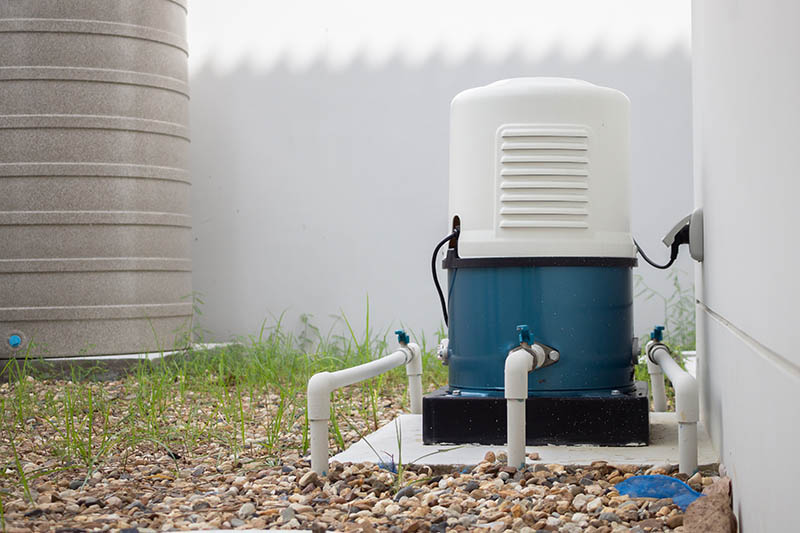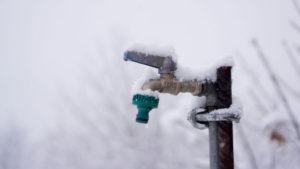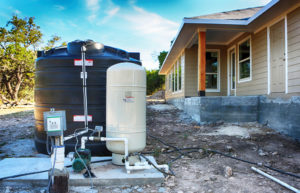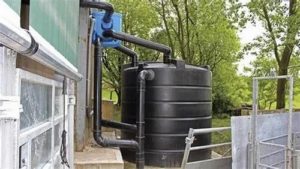Installing a well pump system can be a daunting task, especially if you are unfamiliar with the process.
However, by being aware of common mistakes to avoid, you can ensure a successful and efficient installation that meets your water needs for years to come.
We will explore some of the most important mistakes to steer clear of when installing a well pump system, so you can avoid costly errors and potential hazards.
Whether you’re a seasoned homeowner or a first-time installer, these tips will help you navigate the process with confidence and ensure a high-quality installation.
Improper Well Construction
A well should be constructed with proper materials and techniques to ensure it can provide a steady supply of water. Poor construction can lead to contamination and water quality issues.
When a well is not built with proper materials and techniques, it can be prone to contamination and water quality issues.
For example, if the well casing is not properly sealed, contaminants from the surrounding soil and rock can enter the well and mix with the water, causing health risks and unpleasant taste and odors.
If the well is not properly cemented and grouted, the casing can shift or settle over time, causing the well to become contaminated or producing water that is not suitable for consumption.
Proper well construction techniques include using durable materials like stainless steel or PVC for the casing and screen, thoroughly sealing the well with appropriate grout and cement, and using appropriate filter pack and gravel materials to prevent sand and sediment from entering the well.
Incorrect Pump Sizing
Using a pump that is too small or too large for the well’s flow rate can result in premature wear, inefficiency, and reduced lifespan. Proper pump sizing is important for optimal performance.
Selecting an appropriate pump size is a important step in ensuring efficient and reliable water supply systems.
Incorrect pump sizing can lead to premature wear, inefficiency, and reduced lifespan of the pump and other components in the system.
When a pump is too small for the well’s flow rate, it may not be able to keep up with the demand, leading to frequent shutdowns and startups, which can cause excessive wear and tear on the pump and other components.
On the other hand, using a pump that is too large for the flow rate can result in energy waste and increased maintenance costs.
To avoid these issues, it is essential to properly size the pump based on the well’s flow rate and other factors such as the system’s pressure and temperature requirements.
This involves calculating the total dynamic head (TDH) of the system, which takes into account the pressure and friction losses in the pipes and fittings.
By selecting a pump that is precisely sized for the TDH, the system can operate at optimal efficiency, prolonging the lifespan of the pump and other components, and minimizing energy consumption and maintenance costs.
Incorrect pump sizing can result in reduced system lifespan, increased maintenance costs, and higher energy bills.
Therefore, it is important to invest time and resources in proper pump sizing to ensure optimal performance and minimize long-term costs.
Inadequate Pressure Tank Sizing
A pressure tank should be sized correctly to provide enough storage capacity for the well’s flow rate and pressure demands. Insufficient tank size can lead to system failure and water loss.
Inadequate pressure tank sizing can lead to system failure and water loss, resulting in costly repairs and lost resources.
A pressure tank should be sized correctly to provide enough storage capacity for the well’s flow rate and pressure demands.
If the tank is too small, it will not be able to store enough water to meet the system’s needs, leading to inadequate pressure and potentially causing the system to fail.
On the other hand, if the tank is too large, it will waste energy and water by constantly cycling on and off.
Proper tank sizing requires careful consideration of the well’s flow rate, the system’s pressure demands, and the overall water usage patterns in the home or building.
It is essential to consult with a qualified professional to determine the correct tank size to ensure optimal performance and efficiency.
Poor Electrical Connection
A well pump system requires proper electrical connections to ensure safe and reliable operation. Incorrect wiring can cause electrical hazards, fires, and pump failure.
A well pump system’s proper electrical connections are important for safe and reliable operation.
Incorrect wiring can lead to electrical hazards, fires, and pump failure, which can result in costly repairs, downtime, and even injury or loss of life.
The electrical connections in a well pump system should be checked regularly to ensure that they are secure and properly insulated.
This includes the power supply cable, the control wiring, and any other electrical components that are part of the system.
It is essential to use the correct type and size of wiring and connectors to prevent loose connections and ensure a secure fit.
The system should be grounded properly to prevent the buildup of harmful electrical charges.
By taking these precautions, you can help prevent electrical hazards and ensure the safe and reliable operation of your well pump system.
Improper Well Casings and Screen
A well’s casing and screen should be properly installed and sized to prevent sand, sediment, and debris from entering the pump and contaminating the water.
A well’s casing and screen are important components that protect the water source from contamination.
Improperly installed or oversized casings and screens can allow sand, sediment, and debris to enter the pump, causing mechanical failures and water quality issues.
For example, if the screen is not properly fitted or if it is too large, it can allow larger particles to enter the well, clogging the pump and potentially damaging the equipment.
Similarly, if the casing is not properly set or if it is too small, it can allow water to seep outside the well, introducing contaminants into the water supply.
Properly sized and installed casings and screens are essential to prevent these issues and ensure the safety and quality of the water being pumped.
Regular inspections and maintenance can help detect any potential problems before they become major issues.
Incorrect Pump Selection
Using a pump that is not suitable for the well’s depth, flow rate, or water quality can lead to reduced lifespan, inefficiency, and increased maintenance costs.
Choosing the right pump for your well is important to ensure efficient and reliable water supply.
If you select a pump that is not suitable for the well’s depth, flow rate, or water quality, it can lead to reduced lifespan, inefficiency, and increased maintenance costs.
For example, if the pump is not deep enough to reach the bottom of the well, it may not be able to effectively draw water from the well, leading to reduced water pressure and potential damage to the pump and surrounding equipment.
Similarly, if the pump is not designed to handle the specific flow rate of your well, it may not be able to keep up with the demand, leading to slow draining or even stagnant water in the well.
Using a pump that is not compatible with the water quality in your well can lead to corrosion and clogging, which can drastically reduce the lifespan of the pump and increase maintenance costs.
Therefore, it is essential to select a pump that is specifically designed for your well’s conditions to ensure optimal performance, efficiency, and longevity.
Inadequate Sedimentation and Filtration
A well pump system should include proper sedimentation and filtration to remove suspended solids, bacteria, and other contaminants from the water. Insufficient filtration can result in reduced water quality and system failure.
Inadequate sedimentation and filtration can lead to a multitude of problems in a well pump system.
Suspended solids, bacteria, and other contaminants can be present in the water, and if not properly filtered out, they can cause reduced water quality and even system failure.
Sedimentation is the first step in removing these contaminants, as it allows heavier particles to settle to the bottom of the tank or pit, while clearer water flows into the distribution system.
However, sedimentation alone may not be sufficient to remove all contaminants, which is why filtration is also essential.
Filters can remove smaller particles and bacteria, ensuring that the water being pumped into homes and businesses is safe for consumption.
Without proper sedimentation and filtration, contaminants can accumulate in the distribution system, leading to clogs, corrosion, and other issues that can cause system failures and require costly repairs.
Therefore, it is important to ensure that the well pump system includes proper sedimentation and filtration measures to guarantee high-quality water for users.
Lack of Regular Maintenance
Proper maintenance is essential for ensuring the well pump system operates efficiently and effectively. Neglecting maintenance can lead to premature pump and system failure, as well as contamination and water quality issues.
Neglecting regular maintenance of your well pump system can lead to premature failure of the pump and other system components, as well as contamination and water quality issues.
Proper maintenance is essential for ensuring the well pump system operates efficiently and effectively.
Regular maintenance tasks include inspecting and replacing worn parts, cleaning the pump and other system components, and testing for proper function and water quality.
Failing to perform these tasks can lead to sediment buildup, corrosion, and bacterial growth, all of which can cause your well pump to fail and your water supply to become contaminated.
In addition, neglecting maintenance can lead to higher energy bills and increased wear and tear on the pump and other system components, which can shorten their lifespan and increase replacement costs.
To avoid these issues, it is important to prioritize regular maintenance of your well pump system to ensure it operates at peak efficiency and effectiveness over the long term.
Want More? Dive Deeper Here!
Hey there! If you’re the type who loves going down the rabbit hole of information (like we do), you’re in the right spot. We’ve pulled together some cool reads and resources that dive a bit deeper into the stuff we chat about on our site. Whether you’re just killing time or super into the topic, these picks might just be what you’re looking for. Happy reading!






